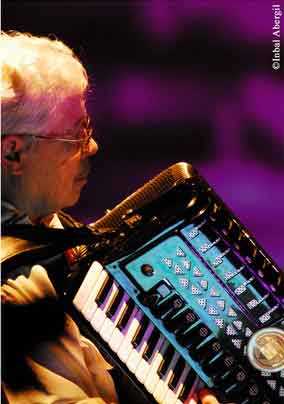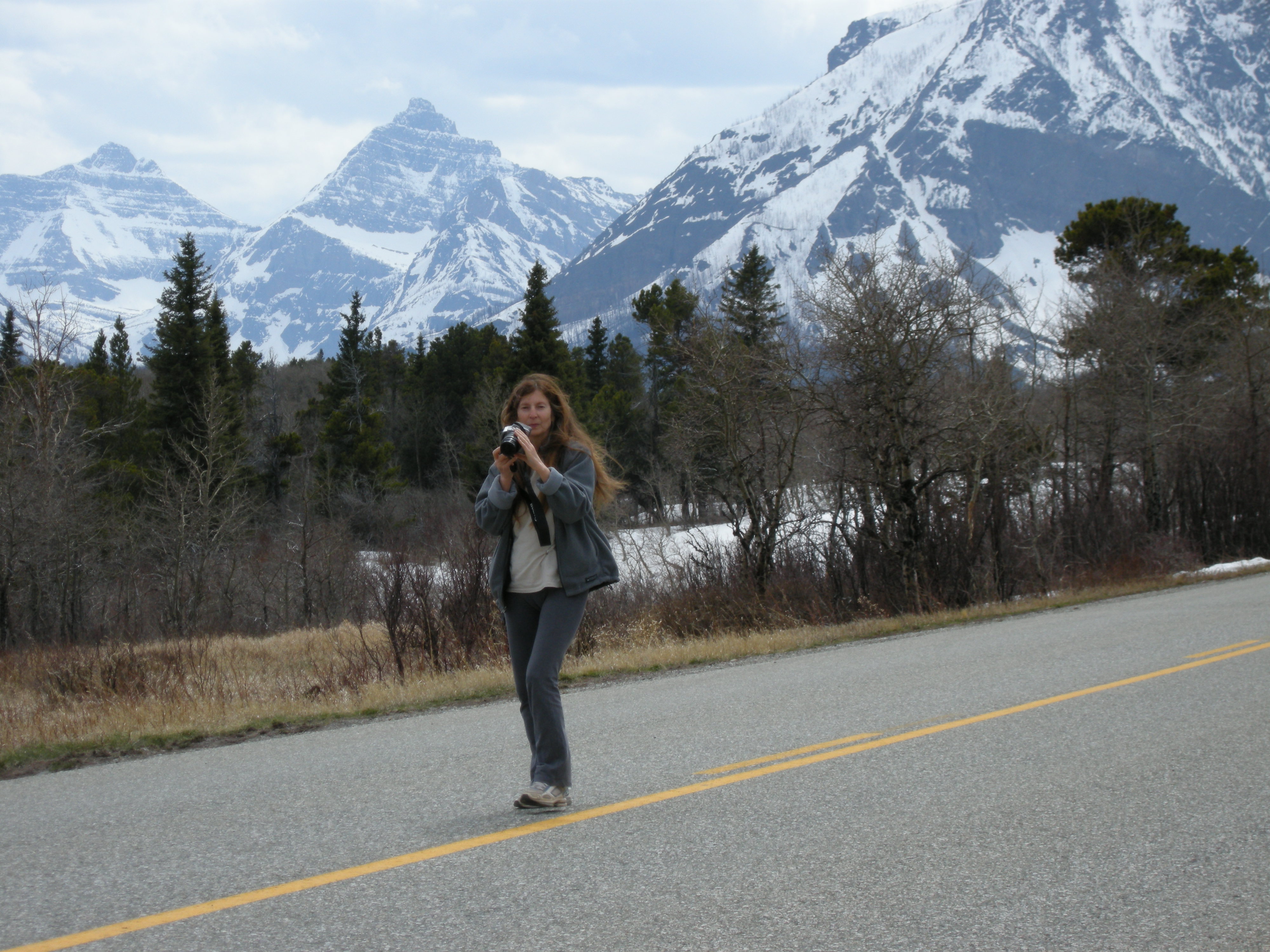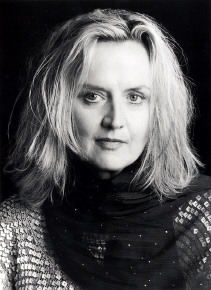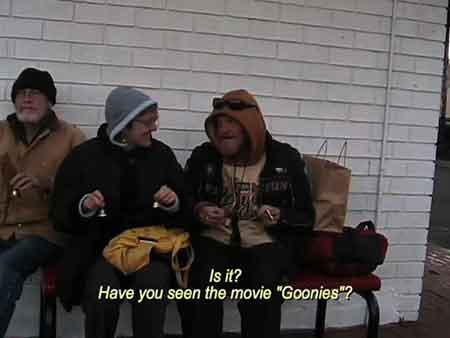Women in Sound Art
7 Musical Micro-Portraits
The 20th century witnessed an explosion in technology, music, and sound art. Composers like Pauline Oliveros and Alice Shields found the intermeshing of music with technology created an even more expansive orchestral palette, incorporating analog synthesizers, tape, and computer music to create new exciting interactive musical works. Sound Art, electroacoustic music, electronic music, computer music – the field itself seems to defy definition. As composer Annea Lockwood states, Sound Art is "a liberating term – so broad that it escapes category, encompassing work in any audible medium, from anyone from whom sound is central."1Such a broad field as Sound Art includes literally hundreds of talented musicians spanning the globe. From emerging 21st century composers like Hsiao-Lan Wang, Kristina Wolfe, and Jaclyn Heyen, to established musicians like Judith Shatin, Laurie Spiegel, Laurie Anderson, Susan Frykberg, Pamela Z, and Ximena Alarcon-Diaz. Resources like Elizabeth Hinkle-Turner’s Women Composers and Music Technology in the United States, and Tara Rodger’s Pink Noises: Women on Electronic Music and Sound cover the topic of women in music technology in more depth. What follows are seven snapshots of contemporary women involved in various aspects of sound art, including musical explorations in performance and improvisation, multimedia, zoömusicology, and avant-garde classical composition. These portraits will give you a tantalizing taste of contemporary Sound Art’s multifaceted interface.
I - Pauline Oliveros

© Inbal Abergil
The Oliveros Expanded Instrument System, or EIS, provides an interesting method of creating sound art. The EIS, originally developed in 1965 with tape delay and tape machines, has evolved to include software like MaxMSP and the latest computer gadgetry.3 The EIS reprocesses a live improvisation, essentially sending the signal through preset software parameters that then emit the sound through a multi-channel speaker set-up that may include multimedia and live video processing. While this tech-speak sounds complex, what it actually sounds like is an immersive environment where the performer and audience enter a state of meditation as the echoing sound loops reverberate throughout the space. Oliveros sits in a web of wiring, her accordion and percussion instruments part of a tangled complex system of foot pedals, switches, software, and controllers. As she blows into a conch shell, improvises on various percussion instruments, and performs on her trusty accordion, complex sounds echo, delay, and wash over the listeners with deep waves of sonority. Oliveros continues to imbue her musical philosophy to each generation through the Deep Listening Institute and her quest for innovation.
II - Maggi Payne

Payne’s sound art has uniqueness all its own, with an ingenious approach to sound synthesis and the visual. Often collaborating with video artists and dancers in her sonic explorations of the micro natural, works like Here Wait, Desertscapes, and System Test (Fire and Ice) create an audiovisual world that is at once familiar and quite alien. System Test (Fire and Ice) combines manipulated sounds of ice melting, paper, and Jacob’s ladders with multimedia, creating danger, powerful frequencies, and intense sizzling of electrical discharge.5 Here Wait fills the hall with a deep rumbling wash of sound as two dancers move mirror-like using angular motions projected via video. While not a work of traditional sound art, Desertscapes takes the soundscape out of the electronic realm and into the concert hall through spatially separated a capella female choirs treated not unlike sound waves manipulated through synthesis. Maggi Payne continues to inspire and create works of incredible alien beauty through complex synthesis, stunning visual works, and an uncanny ability to combine the audiovisual into a surreal sonic landscape.
III - Alice Shields
 Interweaving
vocal music, dance, and electroacoustic music into dramatic works of
operatic proportions, composer Alice Shields is a bastion in the world
of electroacoustic music with an impressive array of complex
compositions combining vocal music, dancers, and tape. Her lengthy list
of large-scale multimedia works includes the opera Apocalypse and the poignant Mass for the Dead.
Since her earliest days at the Columbia-Princeton Electronic Music
Center in the mid-1960s, Shields has infused sound art and
electroacoustic music with a mosaic of august compositions.
Interweaving
vocal music, dance, and electroacoustic music into dramatic works of
operatic proportions, composer Alice Shields is a bastion in the world
of electroacoustic music with an impressive array of complex
compositions combining vocal music, dancers, and tape. Her lengthy list
of large-scale multimedia works includes the opera Apocalypse and the poignant Mass for the Dead.
Since her earliest days at the Columbia-Princeton Electronic Music
Center in the mid-1960s, Shields has infused sound art and
electroacoustic music with a mosaic of august compositions.Compositions like Dust combine Shield’s fascination with classical Indian rhythms, instrumentation, and melodies with a masterful manipulation of voice and sound. Like The Mud Oratorio, Invocation, and Shenandoah, Dust is both a standalone composition and a work meant for dance. The transcultural collaboration built a bridge between East and West through national tours in both North America and India and a conscious effort to combine both traditional spirituality and musicality.6 Alice Shields continues to broaden her musical horizons with compelling works of grand proportions.
IV - Adina Izarra

A recent work of Izarra’s exemplifies the composer’s passion for birdsong and electroacoustic manipulation. The interactive composition titled SISTEMAS VOLATILES combines Max/MSP with bird sounds and live flute performance. The flautist controls and convolutes complex bird sounds using software manipulations in the live setting. In this way, Izarra creates an interesting three-movement work that uses aleatoric algorithms, convolution, speed changes, and filters to create an ever-changing exploration of melodic flute and birdsong through Max/MSP and an array of pedals and filters. While not all of Izarra’s works fit within the scope of sound art, the crux of her musical discoveries for the past decade continue to combine a mature fascination of avian sounds and electronics.8
V - Brenda Hutchinson
From earlier experimentations with the Long Tube, a 9 foot tube for performance with interactive electronics, to her dailybell series and current social sonic experiments in the work What Can You Do?, Hutchinson has taken sound art to new spaces of experience and creativity expanding even to virtual worlds like the Avatar Orchestra Metaverse in the game Second Life. What drives Hutchinson’s art? The composer has a keen interest in the function of music as what she describes as "primal" communication and the social aspects of music making as a communal activity.


© 2008 San Francisco. Still from video by Brenda Hutchinson
VI - Annea Lockwood
 Exploring
the many miniscule facets of sounds, from didgeridoos to cats purring
to colanders swinging over the heads of the audience, Annea Lockwood
uses the many found sounds in our world to create complex large scale
compositions like A Sound Map of the Hudson River, a work of
sound art derived from her fascination with rivers, steams, and springs.
As mentioned in a review by Julian Cowley, "The essence of Lockwood’s
compositional act has been discovery through attentive listening rather
than radical intervention."11 A journey into the
musical world of Lockwood reveals the beauty and meditative spirit of
the natural (and sometimes unnatural) world around us in the truest
spirit of sound art.
Exploring
the many miniscule facets of sounds, from didgeridoos to cats purring
to colanders swinging over the heads of the audience, Annea Lockwood
uses the many found sounds in our world to create complex large scale
compositions like A Sound Map of the Hudson River, a work of
sound art derived from her fascination with rivers, steams, and springs.
As mentioned in a review by Julian Cowley, "The essence of Lockwood’s
compositional act has been discovery through attentive listening rather
than radical intervention."11 A journey into the
musical world of Lockwood reveals the beauty and meditative spirit of
the natural (and sometimes unnatural) world around us in the truest
spirit of sound art.Like many composers involved in new music, Annea Lockwood explores various musical forms including fixed tape works based on found sounds from natural environments, full-scale acoustic works, and interactive compositions. For one such 1985 piece, titled Three Short Stories and an Apotheosis, Lockwood and technician Robert Bielecki created an interesting sound ball contraption from colanders, foam, and speakers. During the performance, which included found sounds and visual art, Lockwood tossed the ball using a fishing wire over the audience, creating an eclectic and visually interesting interactive sound piece. Annea Lockwood continues to relish what she calls the "immateriality and impossibility" of music and sound in innovative compositions.12
VII - Elainie Lillios

© AJS Photography
"My musical explorations, whether fixed media or interactive, always employ technology as a tool – technology is simply the vehicle for my sonic explorations and compositional endeavors. It’s a means to an end; it provides me with a method to explore ideas and assemble sounds into a time-based structure called music…My objective for each piece is to create an engaging, provocative sound world cast from a strong musical idea, developed over time, cast within a solid formal structure."13
Through manipulation of found sounds from the environment through synthesis, Lillios created works like Dreams in the Desert, an incredible liquid soundscape exploring water through sonic experimentation. While the earlier works of Lillios revolved around more traditional fixed media works, such as standalone tape works, current compositions explore live interactive electronics, sound installations, and works using programs like Max/MSP for live processing.
An example of Lillios’s sonic explorations includes the piece Nostalgic Visions, an intriguing composition for live interactive electronics and piano. Nostalgic Visions explores sonic space through enveloping dissonances reverberating through a ghostly electronic spirit created through live processing. At once the listener loses sense of time and reality as echoing notes encircle the hall. Employing extended and experimental piano techniques that would make Cage and Cowell proud, Lillios succeeds in developing a world of inescapable Sound Art.14
VIII - Conclusion
From the intricacies of birdsong and micro natural sound exploration, grandiose operatic works, and meditative improvisations, the works of these seven women truly expand contemporary definitions of sound art and electronic music. Each woman addresses the implications of electroacoustic music on society in a unique way, from the intimate social interactions of Brenda Hutchinson to the Deep Listening techniques of Pauline Oliveros and the zoömusicological experiments of Adina Izarra. Technology provides the catalyst for these complex sonic explorations. Though the combined experience of these women reaches into the past several decades from the earliest beginnings of electronic music, the cutting edge nature of each new composition reveals an unquenchable thirst for the undiscovered crevices of sound art and innovation. The future of music, evidenced through explorations in virtual worlds, complex interactive software, and robotic musical instruments, may very well stem from the depths of Sound Art.
(((sourcelink)))
- Annea Lockwood, e-mail interview to author, April 2012.
- The Deep Listening Institute. “The Telematic Circle.” Accessed May 2012. http://deeplistening.org/site/content/telematic.
- The Deep Listening Institute “Expanded Instrument System.” Accessed April 2012. http://deeplistening.org/site/content/expandedmusicalinstruments.
- Maggiepayne.com, “Maggi’s long and winding bio.” Accessed May 2012. http://www.maggipayne.com/
- Ohrenhock der Gerauschladen. “System Test (Fire and Ice). Accessed May 2012. http://www.ohrenhoch.org/en/sundays-archive/129-archiv-system-test-fire-and-ice.html
- Arangham, “International Collaborations.” Accessed May 2012. http://www.arangham.com/intcol/dust/touri.html
- Adina Izarra, e-mail interview to author, April 2012.
- Ibid.
- Brenda Hutchinson, e-mail interview to author, May 2012.
- SonicPortraits.org, “Biography.” Accessed May 2012. http://www.sonicportraits.org/bio.htm#articles
- AnneaLockwood.com, "Press: A Sound Map of the Danube." Accessed May 2012. http://www.annealockwood.com/press.htm
- Annea Lockwood, e-mail interview to author, April 2012.
- Elainie Lillios, e-mail interview to author, April 2012.
- Elillios.com, "Nostalgic Visions." Accessed May 2012. http://elillios.com/home/index.php?option=com_content&view=category&layout=blog&id=5&Itemid=34
No comments:
Post a Comment